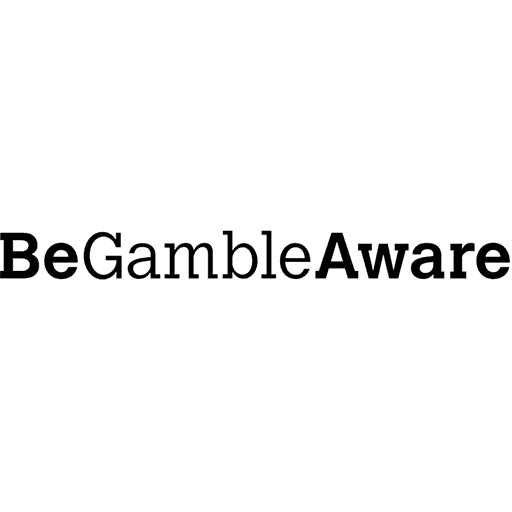If you’re stepping into the world of sports betting, understanding how odds work is key to making smart bets. Odds aren’t just random numbers; they tell you how likely an event is to happen and how much you could win if it does. This guide is here to break down the basics of sports betting odds, making it easier for you to grasp the concept, spot good betting opportunities, and ultimately improve your chances of success.
Key Takeaways
- Sports betting odds indicate the likelihood of an outcome and potential winnings.
- There are three main types of odds: American, fractional, and decimal, each with its own format.
- Reading odds helps you identify favorites and underdogs, guiding your betting decisions.
- Implied probability is crucial for assessing the value of a bet and understanding market movements.
- Avoid common mistakes like overvaluing favorites and remember to compare odds across different sportsbooks.
Understanding Sports Betting Odds

What Are Sports Betting Odds?
Sports betting odds are basically a way to show how likely something is to happen in a sporting event. They also tell you how much money you could win if you bet correctly. Think of them as a translator between what might happen and what you might get paid. It’s important to know that there’s a difference between the actual chance of something happening (the true odds) and what the sportsbooks say the chances are (the implied odds).
Importance of Betting Odds
Why should you care about betting odds? Well, they’re super important for a few reasons:
- They help you figure out if a bet is worth making. If the odds are too low, even if the team is likely to win, it might not be worth your money.
- Odds let you compare different sportsbooks with competitive odds to find the best possible payout. Don’t just settle for the first odds you see.
- Understanding odds is key to managing your bankroll. You need to know the potential risks and rewards of each bet.
Betting odds aren’t just random numbers. They’re a reflection of what the bookmakers think will happen, and they directly impact your potential winnings. Ignoring them is like driving a car without looking at the speedometer – you might get where you’re going, but you’re probably going to crash.
How Odds Reflect Probability
Odds aren’t just about money; they’re also about probability. The odds give you an idea of how likely the sportsbook thinks an event is to occur. For example, if a team is a heavy favorite, the odds will be low, meaning they’re expected to win. On the other hand, if a team is a big underdog, the odds will be high, meaning they’re not expected to win. You can even calculate the implied probability from the odds to get a better sense of what the betting sites believe will happen. This is a key part of finding value in your bets.
Types of Betting Odds Explained
There are a few ways sportsbooks show you the odds, and it’s good to know what they all mean. It’s not like one is better than the other, it’s more about what makes sense to you. The main ones you’ll see are American, fractional, and decimal odds. Once you get the hang of them, you can figure out which outcomes are worth betting on and what your potential payout could be.
American Odds
American odds are pretty common in the US, and they use plus (+) and minus (-) signs. The plus sign shows you how much you’d win on a $100 bet, and the minus sign shows how much you need to bet to win $100. So, if you see +200, a $100 bet gets you $200 in profit. If you see -200, you gotta bet $200 to win $100. It can be a little confusing at first, but you get used to it.
- Positive odds indicate the underdog.
- Negative odds indicate the favorite.
- The bigger the number (positive or negative), the bigger the difference in perceived probability.
American odds can seem weird at first, but they’re just another way to show the same thing as other odds formats. It’s all about how much you win compared to how much you bet.
Fractional Odds
Fractional odds are more of a UK thing, and they look like fractions (duh!). For example, you might see something like 3/1. This means you win $3 for every $1 you bet. So, a $10 bet at 3/1 wins you $30. The total payout is $40 (your $30 profit plus your original $10 back). Here’s a quick breakdown:
- The left number is how much you win.
- The right number is how much you bet to win that amount.
- Easy peasy.
Here’s a table showing how fractional odds work:
| Odds | Stake | Potential Profit | Total Payout |
|---|---|---|---|
| 2/1 | $10 | $20 | $30 |
| 5/2 | $10 | $25 | $35 |
| 1/2 | $10 | $5 | $15 |
Decimal Odds
Decimal odds are popular in Europe and Australia, and they’re pretty straightforward. They show you the total payout for every $1 you bet. So, if the odds are 2.50, a $1 bet wins you $2.50 total (your $1 back plus $1.50 profit). To figure out your profit, you just subtract 1 from the decimal odds and then multiply by your stake. Here’s the formula: Profit = (Decimal Odds - 1) * Stake
- Multiply your stake by the decimal number to find out the total payout.
- Subtract your stake from the total payout to find out your profit.
- Super simple to calculate.
Here’s an example:
If the decimal odds are 3.00 and you bet $20, your total payout is $60 (3.00 * $20). Your profit is $40 ($60 – $20). See? Easy! Understanding decimal odds can really simplify things.
How To Read Betting Odds
Learning how to read betting odds might seem tricky at first, but it’s a skill that every bettor needs. Being able to quickly understand what the odds are telling you is key to spotting good opportunities and understanding betting value.
Interpreting American Odds
American odds, also known as moneyline odds, are common in the United States. They’re shown with a plus (+) or minus (-) sign. The plus sign indicates the amount you could win on a $100 bet, while the minus sign shows how much you’d need to bet to win $100.
For example:
- If the odds are +200, a $100 bet wins you $200 in profit, plus your original $100 back.
- If the odds are -150, you need to bet $150 to win $100 in profit, plus your original $150 back.
Understanding Fractional Odds
Fractional odds are more common in the UK. They show the potential profit relative to your stake. For example, if the odds are 3/1, you could win $3 for every $1 you bet, plus you get your original dollar back. So, a $10 bet at 3/1 would return $30 in profit, plus your $10 stake.
Here’s a quick breakdown:
- 5/2: Win $5 for every $2 bet.
- 1/1: Win $1 for every $1 bet (also known as even money).
- 4/1: Win $4 for every $1 bet.
Decoding Decimal Odds
Decimal odds are popular in Europe and are pretty straightforward. They represent the total payout you’ll receive for every $1 wagered, including the return of your stake. To calculate your potential profit, you multiply your stake by the decimal odds and then subtract your initial stake.
For example, if the decimal odds are 2.50, a $10 bet would return $25 in total (2.50 x $10). Your profit would be $15 ($25 – $10 stake).
Here’s how it works:
- Multiply your bet amount by the decimal odds.
- The result is the total payout (stake + profit).
- Subtract your initial stake from the total payout to find your profit.
Calculating Implied Probability
What Is Implied Probability?
Implied probability is a conversion of betting odds into a percentage. It represents the likelihood of a particular outcome occurring, according to the sportsbook. Basically, it’s how the bookmaker sees the chances of something happening. It’s a super useful tool because it lets you assess whether a bet offers value. If you think the actual probability of an event is higher than the implied probability, you might have found a good bet.
How to Calculate Implied Probability
Calculating implied probability depends on the type of odds you’re dealing with. Here’s the breakdown for each:
- Decimal Odds: The formula is simple: (1 / Decimal Odds) * 100. For example, if the decimal odds are 2.00, the implied probability is (1/2.00) * 100 = 50%.
- Fractional Odds: The formula is: Denominator / (Denominator + Numerator) * 100. So, if the odds are 2/1, the implied probability is 1 / (1 + 2) * 100 = 33.33%.
- American Odds: This one’s a bit different because American odds can be positive or negative.
- For positive odds: 100 / (Positive Odds + 100) * 100. If the odds are +200, the implied probability is 100 / (200 + 100) * 100 = 33.33%.
- For negative odds: (Negative Odds) / (Negative Odds + 100) * 100. If the odds are -150, the implied probability is 150 / (150 + 100) * 100 = 60%.
Here’s a quick reference table:
| Odds Type | Formula | Example | Implied Probability |
|---|---|---|---|
| Decimal | (1 / Decimal Odds) * 100 | 2.50 | 40% |
| Fractional | Denominator / (Denominator + Numerator) * 100 | 3/2 | 40% |
| American (+) | 100 / (Positive Odds + 100) * 100 | +150 | 40% |
| American (-) | (Negative Odds) / (Negative Odds + 100) * 100 | -200 | 66.67% |
It’s important to remember that the implied probability includes the sportsbook’s margin (also known as the vig or juice). This means the total implied probability across all possible outcomes of an event will always be greater than 100%. The extra percentage is how the sportsbook makes its profit. To quickly see your profit and risk, use a sports betting odds calculator.
Using Implied Probability in Betting
So, you’ve calculated the implied probability. Now what? The key is to compare it to your own assessment of the event’s probability. Here’s how:
- Do Your Research: Don’t just rely on the odds. Look at team stats, player form, weather conditions, and any other relevant information.
- Form Your Own Opinion: Based on your research, decide what you think the actual probability of the event is.
- Compare: If your estimated probability is higher than the implied probability, the bet might offer value. This means the sportsbook is underrating the chances of that outcome, and you could potentially profit.
For example, let’s say you’re betting on a baseball game. The sportsbook has Team A at +150, giving them an implied probability of 40%. After doing your research, you believe Team A actually has a 50% chance of winning. In this case, the bet on Team A could be a value bet because you think their chances are better than what the odds suggest. Remember, it’s not a guaranteed win, but it’s a bet with potentially favorable odds.
Strategies for Successful Betting
Finding Value Bets
Okay, so everyone talks about finding "value" in bets, but what does that even mean? Basically, it’s about identifying situations where the odds offered by the sportsbook don’t accurately reflect the true probability of an event happening. If you think a team has a 60% chance of winning, but the odds suggest only a 50% chance, that’s a value bet. It’s not about guaranteed wins (there’s no such thing!), but about consistently making bets where the potential payout is greater than the risk you’re taking. Look into sports betting strategy to help you find these opportunities.
- Do your homework: Research teams, players, and conditions.
- Compare odds across different sportsbooks.
- Don’t just follow the crowd; think for yourself.
Managing Your Bankroll
This is probably the least exciting part of sports betting, but it’s also the most important. Think of your bankroll as your investment capital. You wouldn’t blow all your savings on one risky stock, right? Same goes for betting. A good rule of thumb is to only bet 1-5% of your bankroll on any single event. This helps you weather losing streaks and stay in the game longer. It’s all about sustainability. Here’s a simple breakdown:
| Bankroll Size | Recommended Bet Size (1-5%) |
|---|---|
| $100 | $1 – $5 |
| $500 | $5 – $25 |
| $1000 | $10 – $50 |
Understanding Market Movements
Betting markets are dynamic. Odds change constantly based on news, injuries, weather, and, most importantly, the volume of bets placed on each side. Understanding these market movements can give you an edge. For example, if a star player gets injured and the odds on their team drift out, that could present a value opportunity if you think the market has overreacted. Keep an eye on up-to-date odds to help you make informed decisions.
It’s easy to get caught up in the excitement of betting, but remember that it’s a marathon, not a sprint. Successful bettors are disciplined, patient, and always learning. Don’t be afraid to adjust your strategy as you gain experience and knowledge.
Common Mistakes to Avoid

It’s easy to get caught up in the excitement of sports betting, but avoiding common pitfalls can seriously improve your chances of success. Let’s look at some frequent errors bettors make.
Overvaluing Favorites
Everyone loves betting on the favorite, right? They’re the favorite for a reason! But blindly betting on favorites is a classic mistake. Just because a team is favored doesn’t guarantee a win, and the odds often don’t reflect the true risk involved. Consider this:
- The payout on favorites is usually lower, meaning you need to win more often just to break even.
- Upsets happen all the time. That’s part of what makes sports exciting.
- Public perception can inflate the odds on popular teams, creating less value for the bettor.
Ignoring Contextual Factors
Stats are great, but they don’t tell the whole story. Ignoring contextual factors is a huge mistake. Things like injuries, weather, and even team morale can significantly impact a game’s outcome. For example, a star player’s injury can drastically reduce a team’s chances, regardless of their overall record. Similarly, a team playing a road game after a long flight might not perform at their best. Always dig deeper than the surface-level stats. Understanding the market’s perception is also important.
Neglecting to Shop for Odds
This is probably the easiest mistake to avoid, yet so many people skip this step. Different sportsbooks offer different odds on the same event. Not shopping around for the best odds is like leaving money on the table. It might not seem like a lot at first, but those small differences add up over time.
Imagine you want to bet on the Yankees. One sportsbook offers them at -120, while another has them at -110. By simply choosing the better odds, you’re increasing your potential payout for the same risk. It’s free money, so why not take it?
Here’s a quick example:
| Sportsbook | Yankees Odds | Potential Payout (on $100 bet) |
|---|---|---|
| Book A | -120 | $83.33 |
| Book B | -110 | $90.91 |
Tips for New Bettors
Start Small and Learn
When you’re just getting into sports betting, it’s super important to take it slow. Don’t jump in with huge bets right away. Think of it like learning a new game – you wouldn’t start by playing at the highest level, right? Begin with smaller amounts that you’re comfortable losing. This lets you get a feel for how things work without risking too much money. Focus on understanding the different types of bets, how sports betting odds work, and how to manage your bankroll. Experience is the best teacher, and starting small gives you room to learn from your mistakes without major financial hits.
Utilize Betting Tools
There are tons of tools out there that can help you make smarter bets. Seriously, don’t sleep on these. Here’s a few:
- Odds comparison sites: These show you where to find the best odds for a particular bet, so you can maximize your potential winnings.
- Statistical analysis websites: These sites provide data and trends that can help you make more informed decisions. Look for information on team performance, player stats, and historical data.
- Bankroll management apps: These apps help you track your bets, manage your money, and see where you’re succeeding and where you’re not.
Using these tools doesn’t guarantee wins, but they can definitely give you an edge. They help you analyze information more effectively and make more strategic bets.
Stay Informed on Sports News
Keeping up with the latest sports news is a must. It’s not just about knowing who won the last game; it’s about understanding the context behind the games. Here’s what to look for:
- Injuries: A key player getting injured can drastically change a team’s chances.
- Team form: Is a team on a winning streak or in a slump? Recent performance matters.
- Coaching changes: A new coach can bring a different strategy and impact team morale.
- Weather conditions: Weather can affect outdoor sports, influencing game outcomes.
Staying informed helps you make more educated guesses and spot opportunities that others might miss.
Wrapping It Up: Your Betting Journey Begins Here
So, there you have it! Understanding sports betting odds doesn’t have to be a headache. It’s all about getting comfortable with the numbers and what they mean for your bets. Remember, odds show you the likelihood of an event happening and how much you could win. Take your time to learn the different types of odds and how to interpret them. Keep an eye on the market and always compare odds before placing your bets. With a little practice, you’ll start spotting value and making smarter choices. Good luck out there, and may your bets be ever in your favor!
Frequently Asked Questions
What are sports betting odds?
Sports betting odds are numbers that show how likely something is to happen in a game. They also tell you how much money you can win if your bet is right.
Why are betting odds important?
Betting odds help you understand the risks and rewards of a bet. They guide you in deciding how much money to wager on a specific event.
What do different types of odds mean?
There are three main types of odds: American, fractional, and decimal. Each type shows the same information but in different ways.
How do I read American odds?
American odds are shown with a plus (+) or minus (-). A plus shows how much you can win on a $100 bet, while a minus shows how much you need to bet to win $100.
What is implied probability?
Implied probability is a way to understand how likely an outcome is based on the odds given by sportsbooks. It helps you see the true chances of winning.
What are some common mistakes new bettors make?
New bettors often make mistakes like betting too much on favorites, not considering important factors like injuries, and not comparing odds from different sportsbooks.











